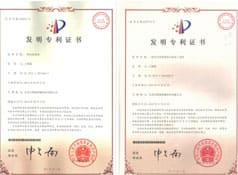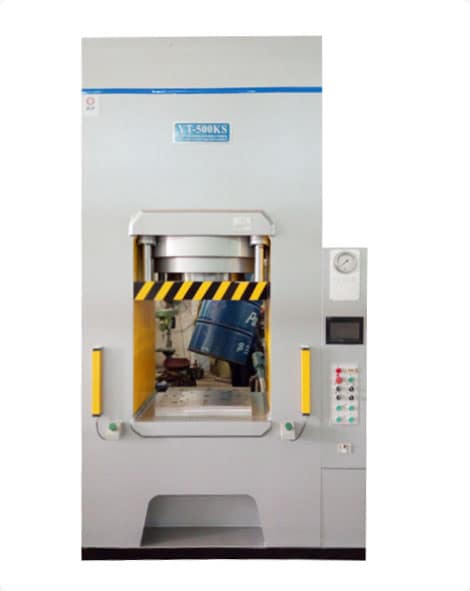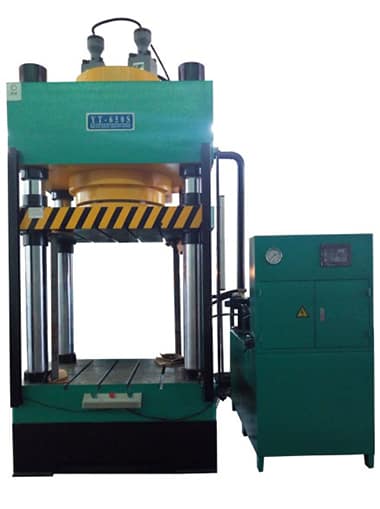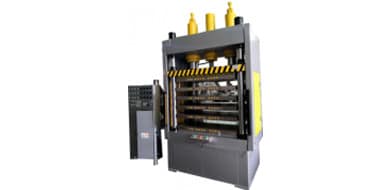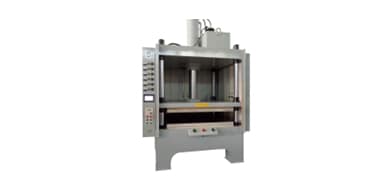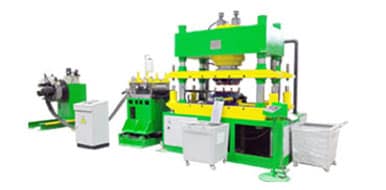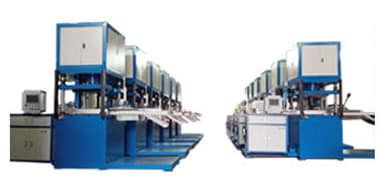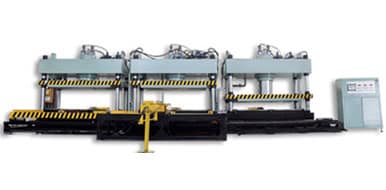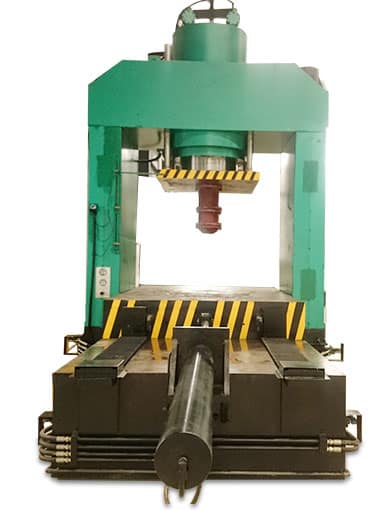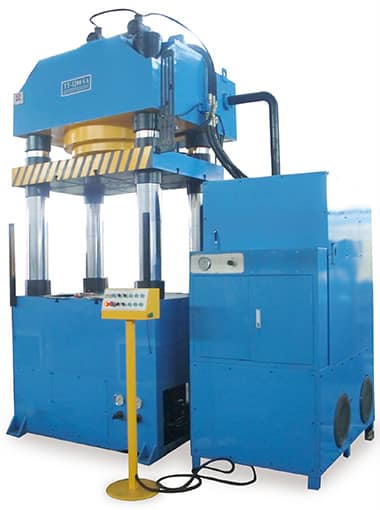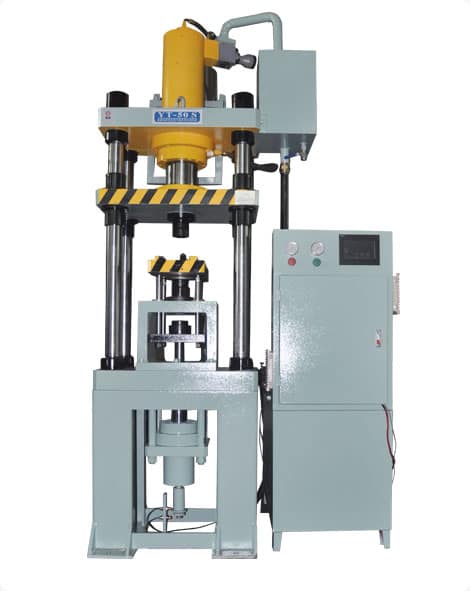How to Make a Hydraulic Shop Press
time:2023-09-02 views:(点击 1,034 次)
Hydraulic presses provide the ideal way to exert high levels of pressure in any shop environment, whether that means stamping parts or pressing bearings onto shafts - they're indispensable tools in most automotive, machining, and metal fabrication facilities.
So how can you make one yourself?
Frame
Hydraulic shop presses are powerful tools for shaping and deforming metal. From straightening bent parts, press fitting bearings in, crushing oil filters or straightening bent bolts - shop presses are an indispensable piece of equipment in any garage or workshop. HEMS offers an assortment of hydraulic presses with different capacities to meet all of your metal-shaping needs.
A shop press' frame is constructed from steel for strength and durability, featuring a base that securely connects it to the floor, and featuring an expansive ram and anvil capable of supporting even heavy loads. A pressure gauge is attached to its frame in order to monitor proper functioning; C-frame, four-column, and benchtop hydraulic presses offer various benefits depending on user requirements; they all boast different operating mechanisms as well.
One of the key aspects of any hydraulic press is its power source. Your choice of pump will have an enormous effect on how much pressure and how quickly your machine operates; hand pumps may be good for low-volume, low-force tasks while electric or air pumps offer more consistent, controlled pressure production with minimum effort required from you.
Shop presses provide users with an assortment of attachments, which can be used for various jobs. Some popular attachments for hydraulic presses include die sets, metal brakes and punches - each offering different uses that help save costs and time in the workshop.
No matter which hydraulic press you opt for, safety must always come first. Hydraulic presses exert considerable force, which could result in serious injuries if not used correctly. Always wear protective equipment and follow manufacturer guidelines when operating the press.
Hydraulic shop presses are extremely versatile tools that can be used for a range of tasks, from separating rusted metals, straightening bent ones, crushing oil filters and crushing oil filter to woodworking projects like carving or jewelry making.
Though hydraulic shop presses can be expensive to purchase, it is possible to create your own for a fraction of the cost by following DIY plans available online. There are numerous DIY plans with detailed lists of materials needed and step-by-step assembly instructions available online, giving you all you need for building one yourself.
Cylinders
Hydraulic presses rely heavily on their cylinders to generate force for crushing objects in the press. As plungers push hydraulic fluid towards ram pistons, this generates tremendous pressure, multiplied by piston area for maximum force output; this principle is known as Pascal's law.
Cylinders are typically constructed of hard chrome plated cold rolled steel, featuring seals capable of withstanding high temperatures. Their diameter can vary depending on the desired working pressure of a hydraulic system and intended task, and whether or not an Inconel material (more expensive) can withstand more pressure without incurring damage.
One important consideration when selecting a cylinder is its stroke length requirement, since this impacts rod buckling strength. Also important when selecting a cylinder is its mounting type as this determines shear loads; foot-mounted models will experience increased shear stresses at their bases; those using base mounts may encounter both shear and bending stresses.
Other considerations involve the piston rod. Its material may range from hard chrome-plated steel to other options; either way, this piece serves to connect the cylinder to other elements in the machine and provide surface for hydraulic pressure generation.
Seals are essential components in hydraulic cylinders. Made from various materials, their primary objective should be slow wear-and-tear resistance and contamination resistance - these properties must also withstand the high pressure produced by hydraulic systems.
Additionally, other components in a hydraulic cylinder that are vital to its successful operation include lubrication systems, piston rod seals and end cap seals. These pieces keep hydraulic fluid inside where it will have its greatest effectiveness.
Individuals interested in building their own hydraulic shop press can find plans online for both the frame and cylinders of this machine, including assembly instructions for both. In addition, these plans contain detailed instructions on connecting a hydraulic power unit to each cylinder of this press.
This powerful press can do everything from bending metal to crushing things! Without one of these hydraulic presses in your workshop, you are missing out on a useful workshop tool - from making woodworking projects simpler and faster, to crushing things! These plans provide easy instructions to help build one capable of handling up to 50 tons of force; plus two attachment plans (Metal Brake and Metal Punch). They're an invaluable investment if you're interested in building their own DIY Hydraulic Shop Press!
Link to this article: https://www.ihydraulicpress.com/nsn/4636.html
Hot Articles
-
How to Make Home Hydraulic Press
Professional machine shop experts recommend that hobbyists consider making their own hydraulic press rather than buying one; doing this can save b……
-
How to Make a Hydraulic Press
Hydraulic presses are highly versatile tools used to form various workpieces. Controlling both their force output and energy use is paramount. Hom……
-
How to Make a Hydraulic Press With Cardboard
The hydraulic press is a machine based on Pascal’s Law, which states that any increase in pressure at one point increases it at all other po……
-
How to Make a Hydraulic Press for Knife Making
A hydraulic press can expand what can be accomplished with hot metal. It allows you to perform many of the same operations as with power hammers but……
-
How Much Pressure Does a Hydraulic Press Have?
Hydraulic presses use hydraulic fluid to create tremendous force, which they utilize in many industrial applications like metal forming and vehicle ……
-
How to Make a Tabletop Hydraulic Press
There is an assortment of hydraulic press machines on the market, ranging from table top models to massive presses with hundreds of tons of pressu……
-
How to Make a Hydraulic Press Machine
Hydraulic presses can be invaluable tools for crushing large, heavy objects. Constructed to withstand high pressure levels, this tool can be utilize……
-
How Can Make a Small Hydraulic Hot Press?
Hydraulic presses can be invaluable tools for both home and shop repairs, offering significant cost savings over traditional tools. Small presses ma……
Latest News
-
How to Make Hydraulic Presses
Make a hydraulic press yourself to shape metal into any desired form, from sinks or car body panels, to bearings on shafts and aluminum extrusions……
-
How to Make a Hydraulic Press Machine
Hydraulic presses are powerful machines used to apply extreme pressure. As demonstrated in this video, these hydraulic presses can crush anything fr……
-
How to Make a Bottle Cap Hydraulic Press
Bottle cap hydraulic presses serve multiple functions for both breweries and home brewers: commercial use is used to meet production deadlines whi……
-
How to Make a Coin Using a Hydraulic Press
Crafting gold and silver coins using a hydraulic press machine can be made much simpler, while simultaneously decreasing noise pollution levels an……
-
How Much Does the Hydraulic Press You Tube Channel Make?
The Hydraulic Press Channel has become one of the YouTube’s greatest success stories, amassing millions of fans through everyday objects being……
-
How to Make a Hydraulic Hash Press
Hydraulic hash presses are an efficient and simple way to produce high-grade rosin. Easy to operate, they can withstand considerable pressure with……
-
How to Make Hydraulic Press Machine PDF
Hydraulic presses use a system of cylinders to generate force, including the master cylinder, pistons and hydraulic pipes. There are different siz……
-
How to Make a 150 Ton Hydraulic Press
Hydraulic presses are machines that use pressure to force pistons into cylinders, often found in manufacturing, automotive repair or general shop ……


